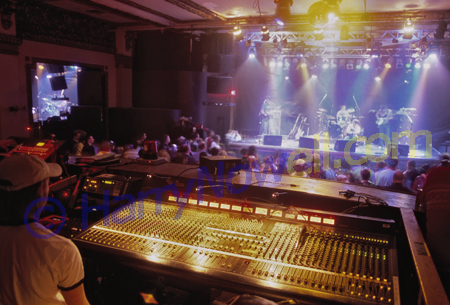Exposed! :: Photo Colour Explained ::
© Copyright 2009. All Rights Reserved.
Contents
- About Colour
- Good Colour Process
- RGB - The Colour Language of Your Camera
- Pro Perspective
- Homework
- Final Frame
I got a distraught phone call from a wedding client. They were happy with my shooting and the album they had ordered from me. They were UNhappy with an album they created independently for their parents.
"The photos look different!" the groom cried. After some discussion and investigation it turned out the photos the clients had printed themselves, appropriately, were not as nice as the original prints we provided. The couple was exasperated and disappointed in the work their lab had done.
They were learning about the complex and confusing world of colour. In this month's Exposed! we shed some light into the murky world of vivid hues.
About Colour
Everyone understands the idea of colour but it's harder to define.
Take the example of Coca Cola. The red in Coca Cola advertising and packaging is distinctive. As far as Coke is concerned it is crucial their red is depicted properly. That's tough to do.
Millions are spent making sure Coke red is the correct red. To make things more complicated consider this: the correct red ink for a newsprint ad will produce a different red on glossy magazine stock. What about the correct Coke red for aluminum cans or the world wide web?
Yep, it's complicated. Below is an explanation to keep it simple.
Good Colour Process
Colour can be displayed in two ways, traditional or electronic. Working with the hues in these different worlds requires knowledge and different collections of colours.
- Traditional colour is colour that is applied to a surface - ink or pigment on paper, wood or metal. This is referred to as CMYK colour - Cyan, Magenta, Yellow and BlacK. A recipe of colour is mixed from these four hues and applied to a surface. Different media (newsprint, glossy magazine paper...) will affect the colour differently.
- Electronic colour is colour that can be seen on your computer monitor, tv, camera's preview screen, etc. There is no ink - just hues being created by different electronic means - cathode ray tubes or liquid crystal displays. This colour is known as RGB colour - Red, Green, Blue.
Converting colour from your computer screen to a print is a tricky process because you are using two different technologies. What complicates things further are the different gamuts (or collections) of colour available within RGB and CMYK colour spaces.
RGB - The Colour Language of Your Digital Camera
Within the world of RGB - the colour language of your digital camera and computer - there are different colour collections available.
Two popular choices are 'sRGB' and 'Adobe RGB 1998.' There is a third, newer colour space - 'ProPhoto.'
- 'sRGB' represents a smaller collection of colours used predominantly for electronic media.
- 'Adobe RGB 1998' represents a larger collection of colour and is a good choice for broad use.
- ProPhoto represents a newer and larger collection still. It can only be used with 16 bit photos and encompasses a collection of colours larger than we can see. Some advanced knowledge and skills are needed to make this work well for you!
 |
Simulates Adobe RGB 1998 |
This photo was taken at a hopping music hall for a stock assignment. I spent some time shooting the sound board and vivid colours of the show.
The two versions show an exaggerated difference in colour available with different gamuts. The difference between the photos above and below will be more subtle, but still significant, in real life applications.
 |
Simulates sRGB colour |
Your choices make a big difference. Your photo will not gain extra colours by just changing from a small gamut to large gamut.
Many cameras are set to sRGB by default. Depending on the final use, you may want to set your camera to Adobe RGB 1998 or ProPhoto (with some extra research!) The two latter gamuts will give a broader spectrum of colour choices more appropriate for print applications.
Once you have chosen your camera's colour gamut it is important to be consistent across all hardware and service providers. If you choose Adobe RGB 1998 it is important to calibrate your monitor and printer while using the correct settings for software and service providers - good colour process. Without consistent colour gamuts across your process your post processing efforts will be worthless.
Pro Perspective
Colour is critical.
Some clients understand the intricacies of colour. Others need to be gently educated to help them achieve appropriate results with my photos. A photographer needs to be multitalented to have photos reproduced well.
It is disappointing to see good work printed badly by a client. Poor printing reflects poorly on me!
Homework
Easy:
- Take a digital file and change it between different gammuts. Notice the difference.
- Learn to calibrate your monitor.
- Take an identical digital file and get four different printers or labs to make an 'identical' print. Notice the differences.
- Learn more about colour!
Final Frame
Take photos. Learn about colour. Have fun!
